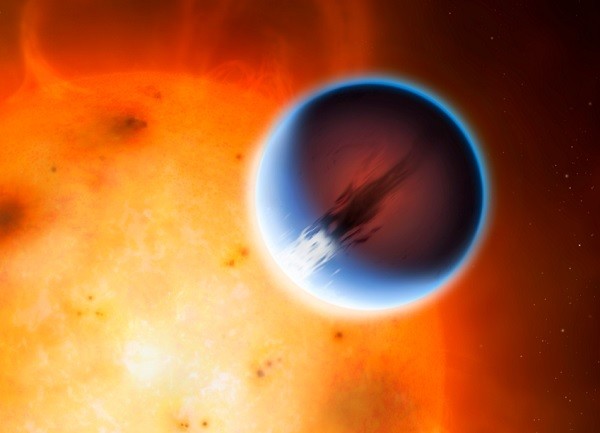New research has identified an exoplanet or a planet well beyond the solar system, that has wind speeds of more than 2 kilometers per second.
According to researchers from the University of Warwick, this is the first time ever that the weather on an alien planet has been identified, mapped and measured directly. Wind speeds on this exoplanet is estimated to be 20 times greater than the fastest winds ever known on Earth, equalling to seven times the speed of sound.
According to lead researcher of the Astrophysics group in the University of Warwick, Tom Louden, this is the first ever weather map from a planet outside the solar system where even if it was previously known that there are winds on exoplanets, this marks the first time of directly measuring and mapping a weather system.
This newly discovered planet is known as HD 189733b where researchers have obtained the velocities of the world, starting with strong winds moving at incredible speeds of 5,400 miles per hour with directions blowing from its day side to its night side.
Louden explains how these ultra fast blowing alien winds are moving with the help of high resolution spectroscopy of the sodium absorption properties in its atmosphere. With a certain Doppler effect of these properties, parts of the HD 189733b's atmosphere were determined to move towards or away in the direction of Earth, allowing its velocity to be measured.
This crucial data was collected by HARPS (High Accuracy Radial velocity Planet Searcher) in Chile, where this was used to obtain velocity measurements as the the planet moves in front of its host star where its surface becomes brighter at the center than its edge. This light from the star shines through the planet where some of it are blocked by the atmospheric changes on the planet. This data is combined with both sides of the planet that resulted in a velocity map.
Researchers believe that these techniques will greatly help with the study and investigation of Earth like planets. According to Peter Wheatley from the University of Warwick, this is an exciting phase as scientists have discovered a new way to map weather systems on distant exoplanets.
This new planet is apparently also one of the most investigated class of planets that are also dubbed as "hot Jupiters". However, HD 189733b is 10 times larger than Jupiter and possesses a scorching temperature of 1800 degrees Celsius. This new study also reveals that the planet appears as bright blue in the naked eye that is probably caused by silicate particles in the clouds found in its atmosphere.
This new study is published by Astrophysical Journal Letters.



























